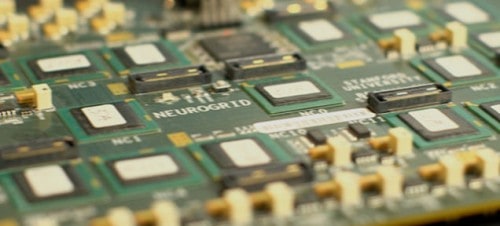
Try as you might with all your overclocking, your extra cores and your multiple gigabytes of RAM, but there are just some things that the human brain can do better than even the most powerful of computers. Perhaps that’s why some bioengineers from Stanford looked to the human brain for inspiration when they developed the Neurogrid microchip.
The so-called “brain” computer not only simulates the activity of a real human brain, but it does so with less power than it takes to run an iPad, all while being 9,000 times faster than a normal computer brain simulator. And that normal brain simulator uses 40,000 times the power of the Neurogrid too, which is composed of 16 custom Neurocore chips. All said, the Neurogrid system can simiulate one million neurons and billions of synaptic connections. Compared to a regular PC trying to simulate the same number of neurons, it is 100,000 times more energy efficient.
Coding for the $40,000 Neurogrid prototype is no walk in the part, as “you have to know how the brain works to program one of these,” says researcher Kwabena Boahen. “We want to create a neurocompiler so that you would not need to know anything about synapses and neurons to able to use one of these.”
The Neurogrid isn’t meant to replace the PC on your desk nor is it really the precursor to something like Tony Stark’s Jarvis. Instead, the application for Neurogrid is to control prosthetic limbs for people who are paralyzed or otherwise injured. The prototype may be $40,000, but if they upgrade to modern fabrication processes, that can come down to a cool $400. Check out the video below for more from the research team.
Via Gizmodo

